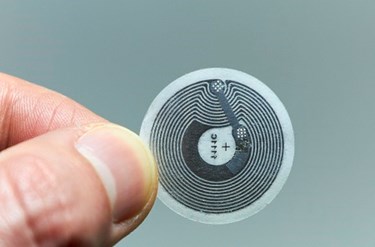Why The Sensor Market In Healthcare Is Expected To Grow
By Megan Williams, contributing writer

According to a new market research report, “Sensor Market In Consumer Healthcare,” by MarketsandMarkets, the sensor market in Consumer Healthcare is expected to reach $47.40 billion by 2020, growing at an estimated compound annual growth rate of 5.56 percent from 2014 to 2020.
That growth is due at least in part to the new advancements in using sensors as an integral part of creating a more complete healthcare system.
A Closed Loop System
If you’re familiar with the Xbox Kinect, you understand the basic idea behind home sensors. The sensors are about more than just games, or even patient data though.
One of the biggest critiques of the current U.S. healthcare system is that it really isn’t a system at all … that it is instead, a collection of disparate information, devices, and systems that either don’t connect, or require human intervention to do so. This disconnect is cited as the source of many of the inefficiencies and dangerous conditions the system harbors.
Sensors answer this issue by connecting what goes on the patient’s home, to what happens in an ambulance, then in the hospital, and eventually, back to the home. Sensors can track activity, behaviors, and vital signs with the goal of avoiding re-hospitalization.
Applications
The potential applications of sensors to patient care are innumerable. Some of the emergent technologies though, are outlined here, in a report from The California Healthcare Foundation titled “Making Sense Of Sensors: How New Technologies Can Change Patient Care.” Some of the specific applications include:
- Blood-sampling sensors: like a glucose meter that requires a blood sample
- Tissue-embedded sensors: like pacemakers or implantable cardio defibrillators
- Ingestibles: embedded in pills that are swallowed and that eventually dissolve
- Epidermal sensors: including “smart skin” such as patches and digital tattoos
- Wearables: embedded in clothing or accessories/jewelry
- External sensors: such as blood-pressure cuffs and pulse oximeters
This monitoring can be done on an episodic basis (for patience tracking the progress of a disease or recovery) or continuously (for patients at risk for acute conditions).
All of these solutions include some combination of the sensors themselves, smart phones, physician/clinician notification, EHR integration, and the software needed to keep data flowing as intended and to extract the needed information.
Patient Perception
An Intel global innovation survey of 12,000 people in 2013 revealed that patients were highly willing to adopt new technology in healthcare. Sensors specifically, were welcome, with 70 percent of respondents willing to use them in applications like on medication bottles, in toilets, or ingested sensors that are used to collect individual health data.
Barriers
While the idea of sensors in a closed loop system could theoretically help shave down the $31 billion lost yearly because of unnecessary hospitalization of adults, issues still exist. The primary hurdle is that hospitals and other providers do not have the technology to support sensor systems, even if patients are able to acquire them.
Going Deeper
Solutions providers looking for more details on the clinical applications of sensors can download the complete California Healthcare Foundation report here.
